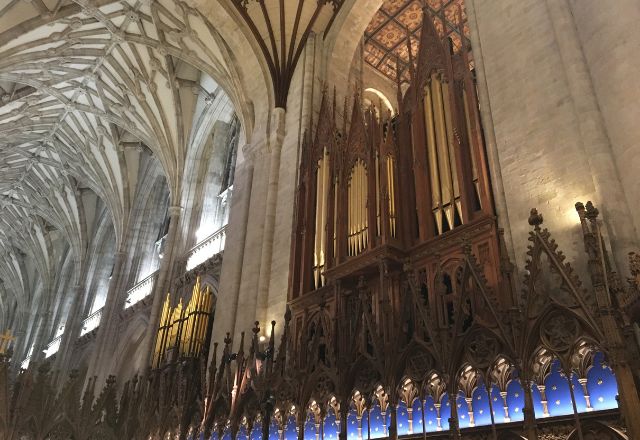It was in November of 2019 that I attended the first meeting in Winchester to discuss the requirement for a temporary instrument that would cover the rebuilding and restoration of the pipe organ, planned at that time for 2021 if I remember correctly.
Plans were agreed. Speakers would be placed in the choir loft and on top of the rood screen. The triforium was ruled out on two counts. The door access was unusually narrow so our preferred speaker cabinets could only reach the triforium if access was available to reach that space through the nave openings at great height.
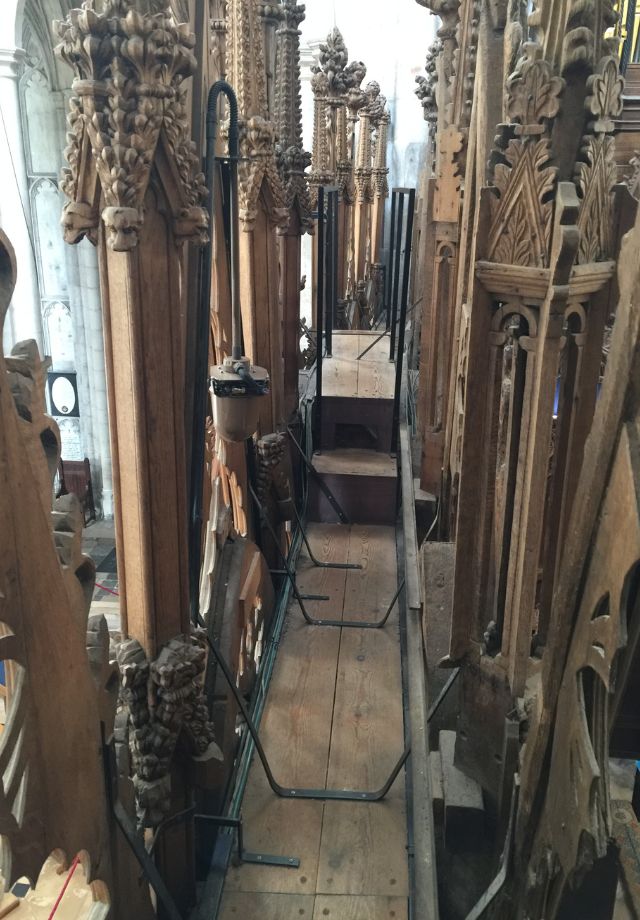
These ideal ‘balcony style locations’ are also home to large heating radiators and the Cathedral were not keen on speakers and radiators being in close proximity. The triforium space in Winchester is not as well finished as in some Cathedrals. We are now rather familiar with many!

At Ely the triforia are wide and flat enough to have a respectable game of football. At Winchester the tops of the arched vaults remain unfilled and progress from east to west is along timber passage boards that span the ridges. Only a rather constrained game of Quidditch could be carried out here! And so for a host of reasons the lower (and easier to wire up) locations were agreed.
And then came covid, so all plans flew well out of the window. Things were back on track in 2022 when Winchester confirmed and reserved our instrument that had been used in Canterbury Cathedral. But by now the Rood Screen locations were also ruled out as Harrison & Harrison needed this route to move efficiently between the organ cases located on both north and south sides of the choir.
Speaker location is important in all digital organ installations
Speaker location is crucial to the success of any digital instrument but especially so when it is a large one as in use here, 88 speaking stops. I say now with some regret that at Canterbury we could have done a much better job if we had been allowed more triforium space. When we installed the large area we had been allocated during our survey was full of scaffolding and we finally set up in an area about 3 metres square.

The pictures contrast quite well what we were allowed with what we expected. 88 stops trying to speak from a space little bigger than a small minibus did not to my mind offer the best advert for digital technology. Armed with this experience I was determined to ensure we were allowed a respectable space for our set up in Winchester and advised that if it were not available we may have to significantly reduce the number of stops that spoke commensurate with the space available for our speaker system.
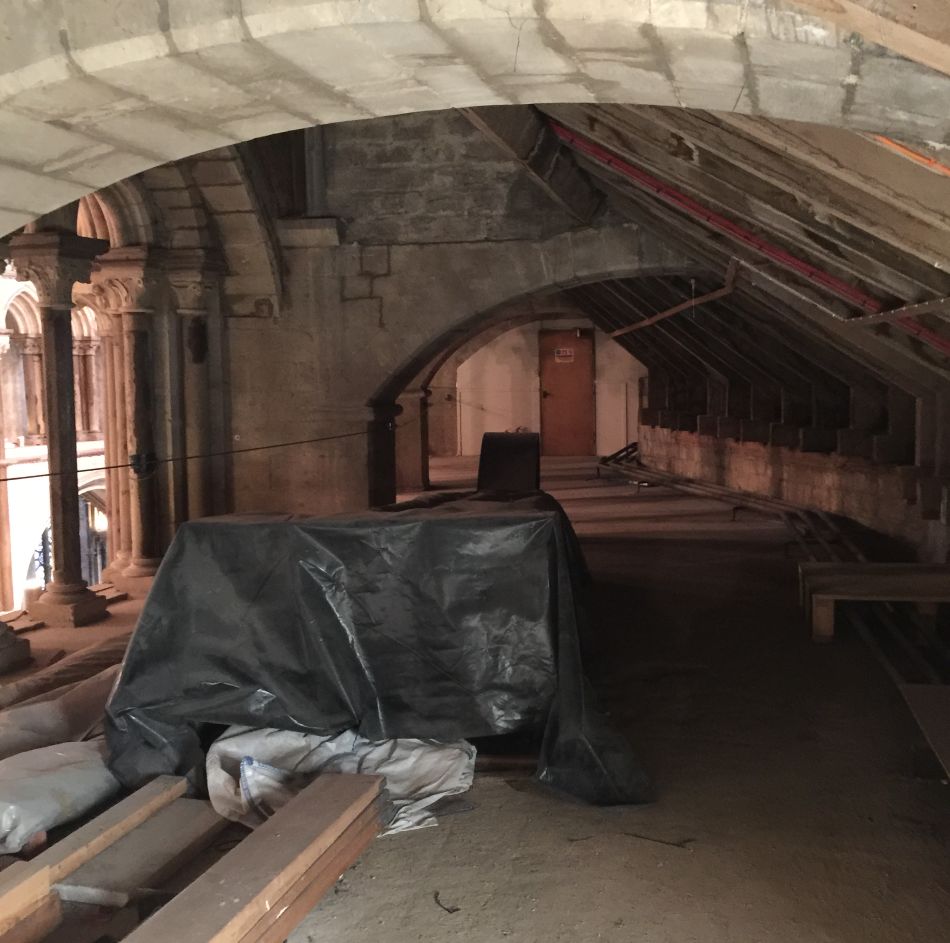
In the bizarre way the world works at the moment, the Ukraine war came in part to the rescue. With energy costs now soaring the Cathedral had understandably cut back on the heating and so the radiators high up in the triforium had been switched off. A major objection to the use of that location was no longer pertinent and so towards the end of 2022 the plan was finally in place.
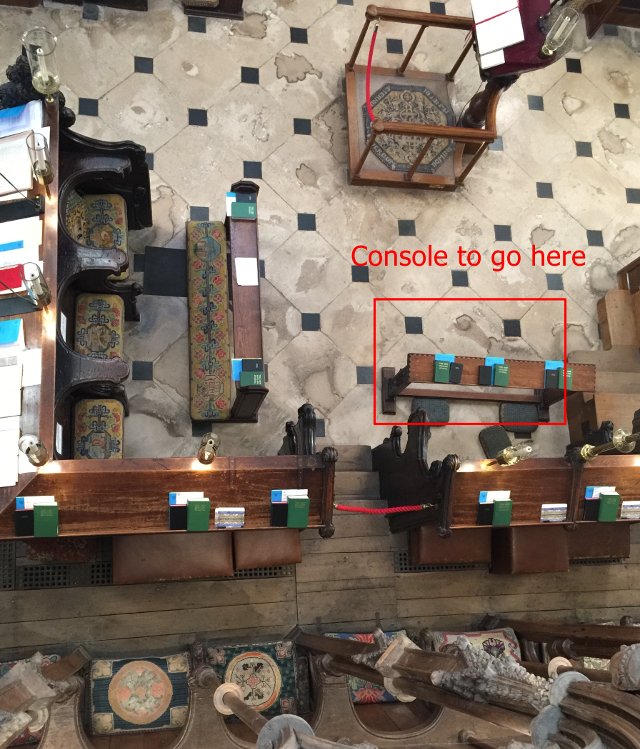
4 speakers and sub bass in the organ loft, 6 speakers in the north triforium and 6 in the south triforium albeit smaller than we would normally use. The console as originally planned on the south side of the choir close to the rood screen. And then another obstacle came to change our plan once more!

A change of plan
When carrying out a large and complex installation I do advise our clients that we ideally want to be set up 4 weeks ahead of the date on which you need to rely on the organ. While what we need to do is essentially the same in all respects, experience has taught us that working in old, large, and historic buildings gives rise to surprises that even good and thorough planning can’t always anticipate.
We were targeting the first week of January for this job but later in January it was revealed that the Cathedral was being used as a film set for an episode of ‘The Crown’ and so having the console set up and playing was not an option. We could now only finish the job just days before it had to be relied on.
To reduce the risk of problems we carried out the speaker installation as planned early in 2023 testing it for integrity before then removing all the cables that went from nave level up to the triforium. These also could not be in view for filming.
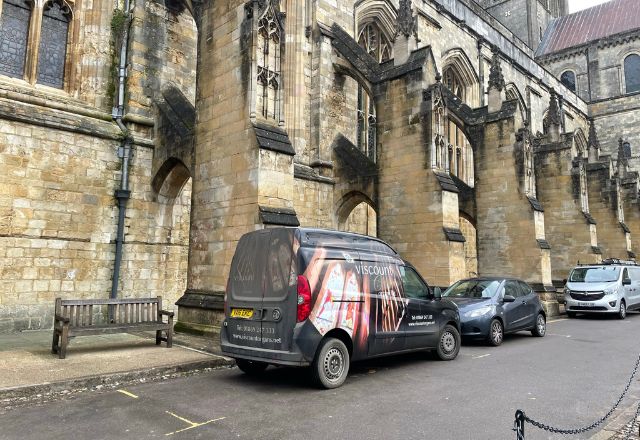
We returned then in the 4th week of January with the console, reinstated the wiring and completed the job with a voicing session on Monday of the last week of January. Close to the wire but all in and working well, or at least that’s what we thought.
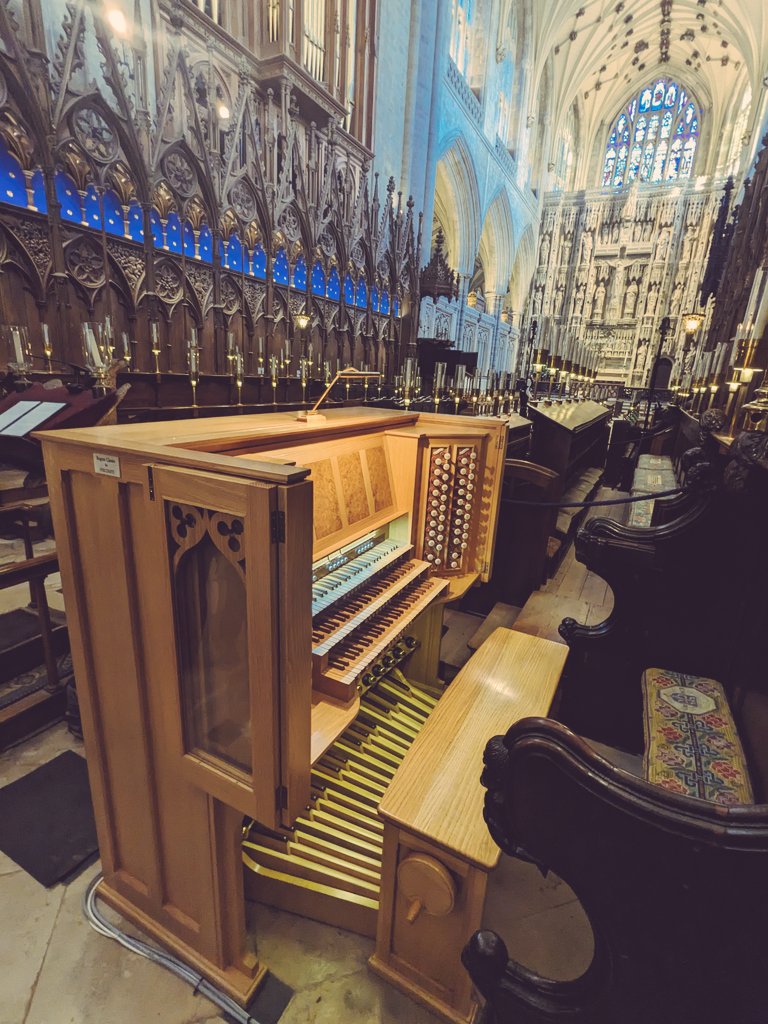
A problem with the speakers requires our attention
I dread customer emails arriving in the evening. They seldom are full of good news and the one from Andrew Lumsden received on the evening of the 31st was no exception. It seems there were sounds of crackling from some triforium speakers. Too loud for the instrument to be used and so evensong on January 31st was sung unaccompanied. The situation was complicated as after we left other electrical equipment had been set up on the console and nearby with extra cables installed closely following the routes our cables took. So while the issues probably lay with one of our amplifiers it could not be ruled out that this new kit had triggered the problem.

Assisted by the local AV company Whitwams who had done this latter work, we were able to rule out that possible cause and so we were back in the Cathedral on February 2nd to change a brand new amplifier that had developed this intermittent fault. After about 30 minutes of use it was clear the new amplifier resolved the problem and we could return to Bicester confident all was now well just in time for the important Candlemas Eucharist that evening. You can view that service on line HERE
Listening to a few of the services we felt that both swell and choir speaking from just 4 speakers in the organ loft were being asked to do too much work and so a few weeks later we returned adding 4 more speakers. This was not a simple doubling of the speakers but also adding 4 more separate audio channels enabling the stops to be far better split across the enlarged speaker array. To understand this facility in detail do look at this video explanation if your time allows.
Another successful Cathedral organ installation completed
So another large and significant installation up and running covering a major pipe organ rebuild. Can we now pencil Winchester in for a hire in about 2053 when perhaps the cycle of overhaul may well begin all over again. Sadly I fear only my successors will get to find out unless I am destined to reach nearly 100 years of age.
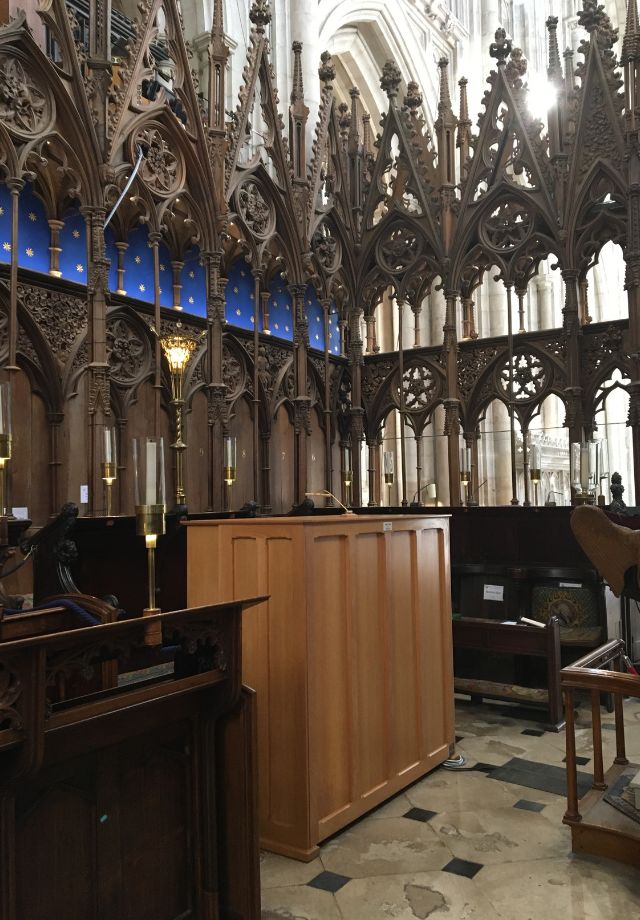
Winchester live stream many services (such as the one below). If you wish to hear the Regent Classic instrument doing its job go to the Cathedral web site HERE and see when the next broadcast is scheduled. There is a camera focussed solely on the organist (hands and feet) so you may well get a very clear view of our instrument in use.
I have had a passion for church organs since the tender age of 12. I own and run Regent Classic Organs with a close attention to the detail that musicians appreciate; and a clear understanding of the benefits of digital technology and keeping to the traditional and emotional elements of organ playing.
